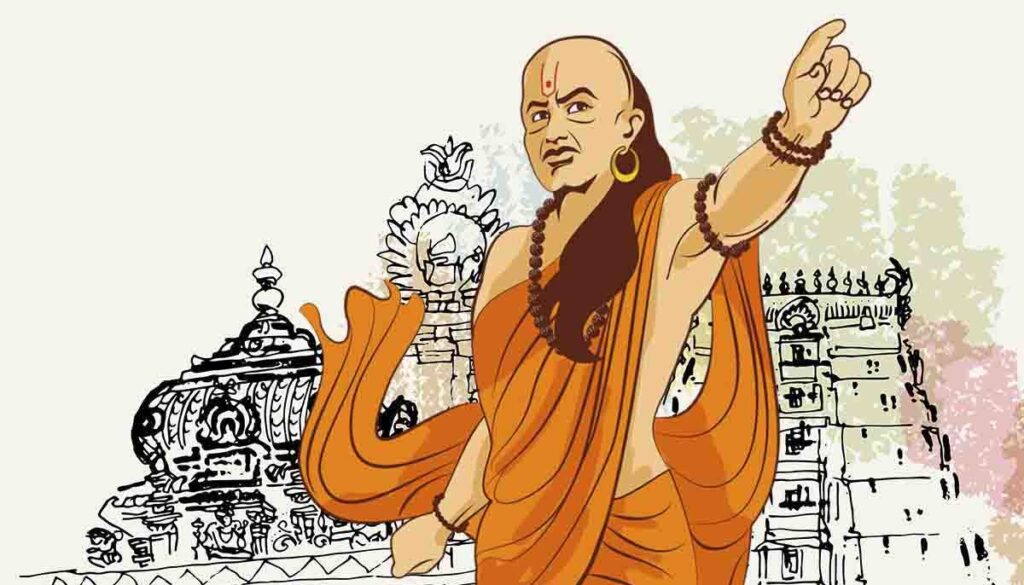Table of Contents
ToggleHello friends.
Welcome to our website where we bring you unique and interesting information about our Sanatana Dharma and Culture. Today, we are going to discuss a tradition deeply ingrained in our Indian culture – the tradition of keeping a tuft of hair or “Choti” or “Shikha”. You may have often seen many religious and spiritual people keeping a tuft on their heads, but do you know the reasons behind it? In today’s blog, we will explore the scientific and religious reasons behind this tradition. So, please stay with us on this enlightening journey and explore the reasons.

Religious, Cultural and Communal Reasons of Braiding or keeping Choti or Shikha on head
The practice of keeping a Choti or Shikha is very ancient in Indian culture and is backed by religious, cultural and health – related reasons: –
Religious Significance of keeping tuft of hair or Choti
Wearing a Choti or Shikha is considered a traditional practice in Hinduism. It serves as a religious symbol and is often worn by Brahmins and other religious individuals. It is believed that the shikha facilitates the transmission of spiritual energy and activates the crown chakra at the top of the head.
Choti – A Cultural Identity
In Indian society, a tuft of hair or “Choti” is also recognized as a cultural identity. This identity is particularly prominent among communities that value their traditions.
Health – Related Reasons
According to some Ayurvedic and traditional beliefs, keeping a Choti helps regulate the temperature of the head and assists in the accumulation of energy. It is believed that a Choti balances the flow of energy in the body.
Choti As a Communal Tradition
Many religious denominations and spiritual groups also advise their followers to keep a Choti because it is considered a symbol of religious discipline and dedication.

Scientific Perspectives of keeping Choti or Shikha on head
The scientific reasons for tradition of braiding or keeping a tuft of hair on head or Choti or Shikha can be explained based on modern science and Ayurvedic principles as follows: –
Temperature Control
According to Ayurveda, maintaining a tuft in the middle of the head helps regulate the temperature of the head. It is believed that the area of the tuft is a significant energy centre for the body, and tying the tuft helps conserve and regulate energy in this area.
Energy Conservation
Some studies and Ayurvedic beliefs suggest that keeping a tuft can conserve the body’s energy. It is believed that having a tuft on the head reduces energy emission, which helps in maintaining physical and mental energy for a longer duration.
Concentration and Mental Peace
The practice of keeping a tuft is common during yoga and meditation because it is believed to enhance concentration and provide mental peace. Tying a tuft can stimulate active areas in the brain, aiding in meditation.
Spiritual Energy Flow
Many traditions believe that a tuft or shikha facilitates the flow of spiritual energy. This area is connected to the sahasrara chakra in the brain, which is crucial for spiritual awareness and intuition.

Thus, the use of the saffron (Bhagwa) colour is not only significant culturally and socially but also provides numerous health benefits from a scientific and therapeutic perspective. Friends, in today’s blog, we saw how the saffron colour is not only an important part of our Indian identity but also emerges as an inspiring and powerful companion in our spiritual journeys. I hope you liked this blog and that it helped you understand the deeper meanings of saffron. If you liked the blog, please like, share, and don’t forget to visit to our website.
Thank you.
जय श्री राम।।
Please Share Through Various Platforms.

“Navaratri: A Pivotal Tour of Inner Power and Divine Triumph”
या देवी सर्वभूतेषु शक्ति-रूपेण संस्थिता।नमस्तस्यै नमस्तस्यै नमस्तस्यै नमो नमः॥ i.e., “Salutations again and again to the Divine Goddess who dwells in all beings in the form of power (Shakti).” Hello friends. Welcome to our Website. Today we will discuss a topic i.e., Navratri: A Vibrant Nine-Day Festival of Devotion, Dance, and Divine Power. Navratri, meaning “nine nights” in Sanskrit (“nava” for nine, “ratri” for nights), is one of India’s most colorful and spiritually significant Hindu

Mahalaya Amavasya: A Sacred and Spiritual Festival – 02
Mahalaya Amavasya is a sacred Hindu observance marking the end of Pitru Paksha—a period dedicated to honoring ancestors through rituals like shraddha and tarpan. Families across India pay homage to departed souls, seeking their blessings and peace. This day not only upholds the tradition of expressing gratitude to ancestors but also heralds the onset of Devi Paksha and Durga Puja celebrations. Mahalaya Amavasya stands as a beautiful blend of remembrance, spiritual reflection, and the renewal of hope, emphasizing the eternal bond between generations and the cyclical nature of life itself.

महालय अमावस्या: एक पावन और आध्यात्मिक पर्व
ॐ पितृभ्यो नमः।श्रद्धया पितॄन् स्मरामि विश्वपितॄन् च सर्वशः।तेषां पुण्यकृतां देवानां च पितॄणां च वयं नमामः। i.e., Om salutations to the ancestors.With reverence, I remember the ancestors, the universal forefathers who are virtuous gods.To them, the holy ones and the ancestors, we offer our salutations. नमस्कार दोस्तों! स्वागत है आपका हमारे चैनल पर। महालय अमावस्या का यह शुभ अवसर हमारे बीच एक बार फिर उपस्थित हुआ है। यह दिन हिन्दू पंचांग के अनुसार पितृ पक्ष का

Hindutva: The Ultimate Political Empowerment of Culture – 02
नमस्ते सदा वत्सले मातृभूमे त्वया हिन्दुभूमे सुखं वर्धितोहम्।महामङ्गले पुण्यभूमे त्वदर्थे पतत्वेष कायो नमस्ते नमस्ते॥ i.e., O loving Motherland, I always salute you! On this Hindu land, I have grown up happily with your nurture and care. O most auspicious and sacred land, for your sake I offer this mortal body. I bow to you again and again.. Hello friends! Welcome to our Website. Today we will discuss a topic that has deeply influenced Indian politics:

हिंदुत्व: भारतीय सांस्कृतिक पहचान का राजनीतिक सशक्तिकरण
नमस्ते सदा वत्सले मातृभूमे त्वया हिन्दुभूमे सुखं वर्धितोहम्।महामङ्गले पुण्यभूमे त्वदर्थे पतत्वेष कायो नमस्ते नमस्ते॥ i.e., O loving Motherland, I always salute you! On this Hindu land, I have grown up happily with your nurture and care. O most auspicious and sacred land, for your sake I offer this mortal body. I bow to you again and again.. नमस्कार दोस्तों! स्वागत है आपका हमारे चैनल पर। आज हम एक ऐसे विषय पर चर्चा करेंगे जिसने भारतीय

History of Indonesia – During the Hindu-Buddhist Period
बुद्धं शरणं गच्छामि, धर्मं शरणं गच्छामि, संघं शरणं गच्छामि। i.e., I take refuge in the Buddha, I take refuge in the Dharma, I take refuge in the Sangha. Hello friends. Welcome to our website, where we share exciting stories of history with you. Today we will discuss a unique and important topic – the history of Indonesia during the Hindu-Buddhist period. This era was a significant turning point in the cultural and religious development of

Why do people keep a tuft of hair or choti ?
Hello friends. Welcome to our website where we bring you unique and interesting information about our Sanatana Dharma and Culture. Today, we are going to discuss a tradition deeply ingrained in our Indian culture – the tradition of keeping a tuft of hair or “Choti” or “Shikha”. You may have often seen many religious and spiritual people keeping a tuft on their heads, but do you know the reasons behind it? In today’s blog, we



